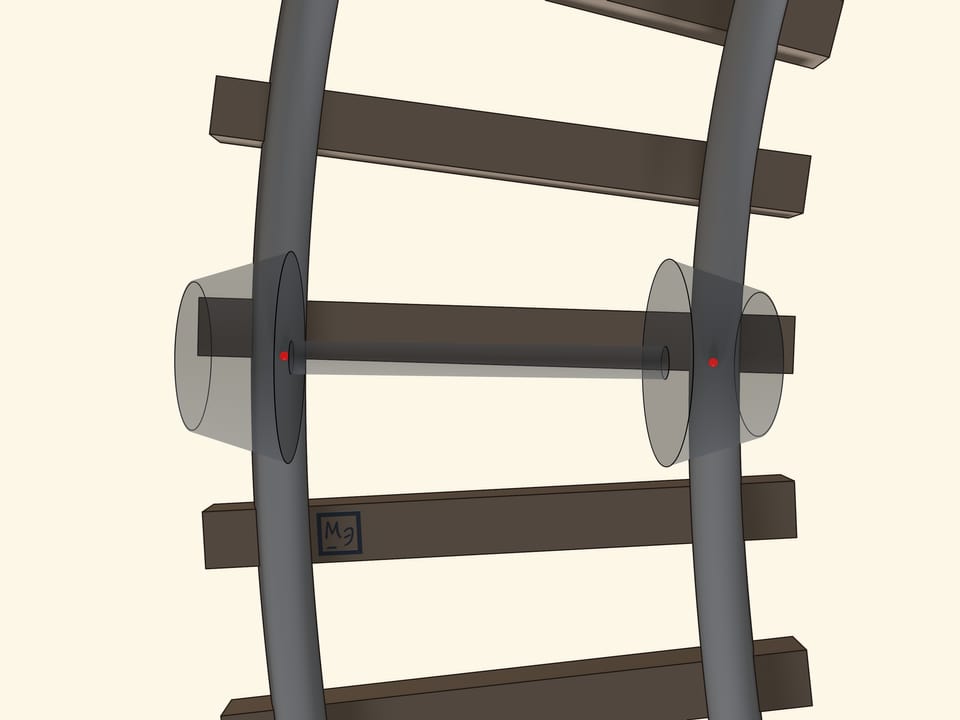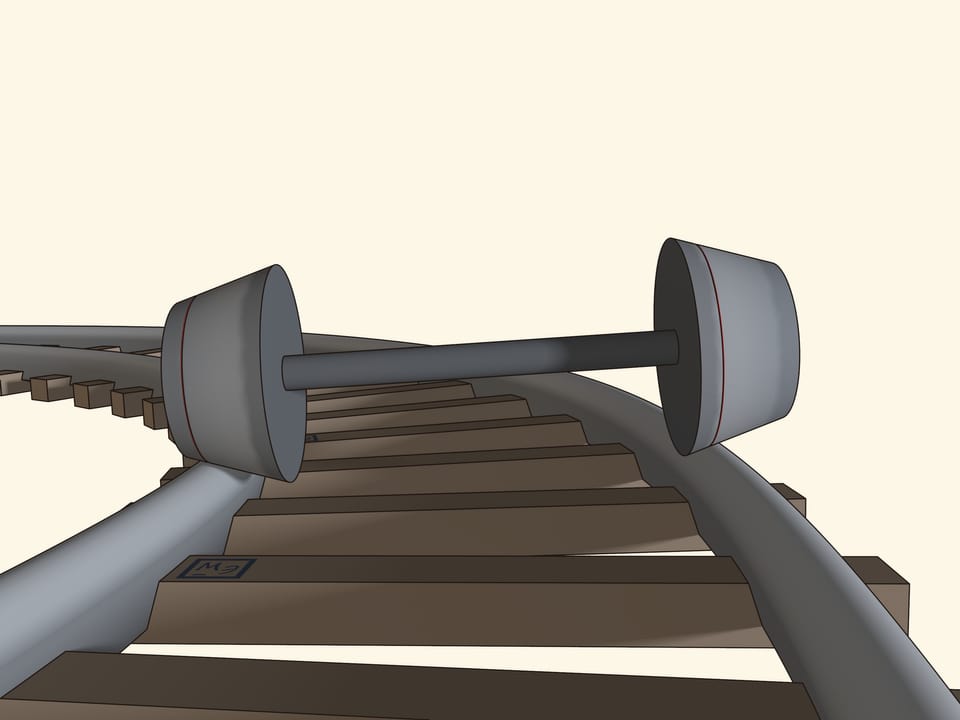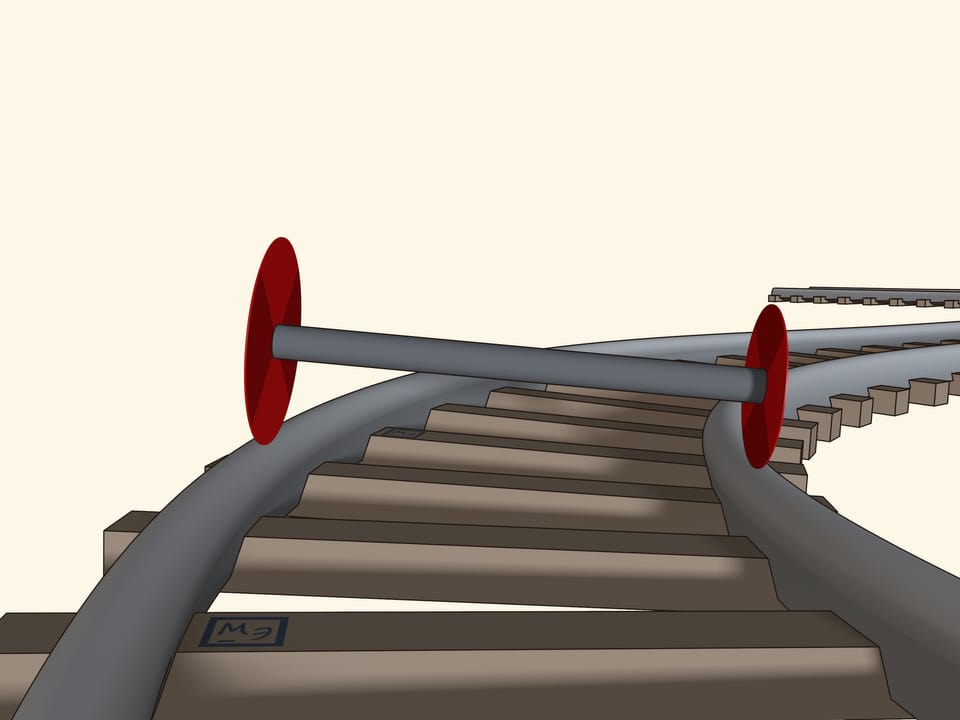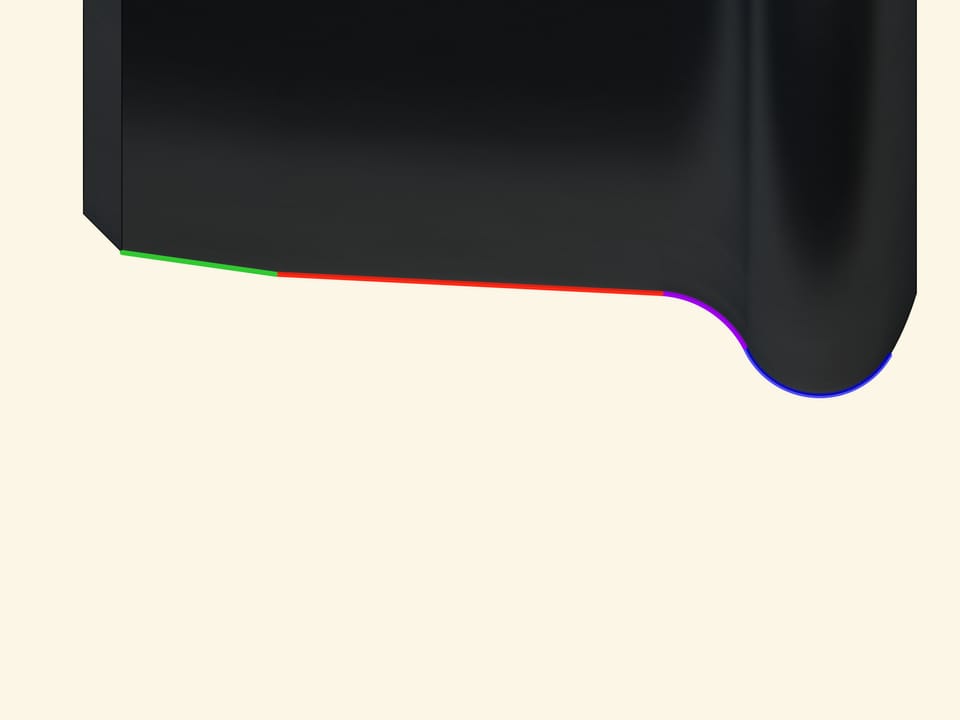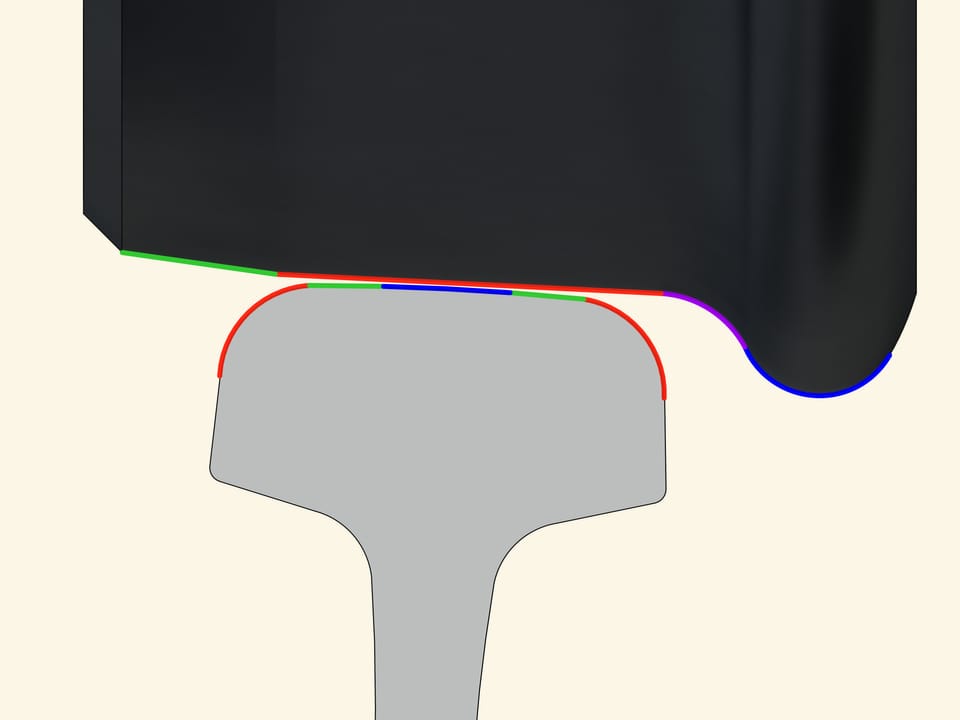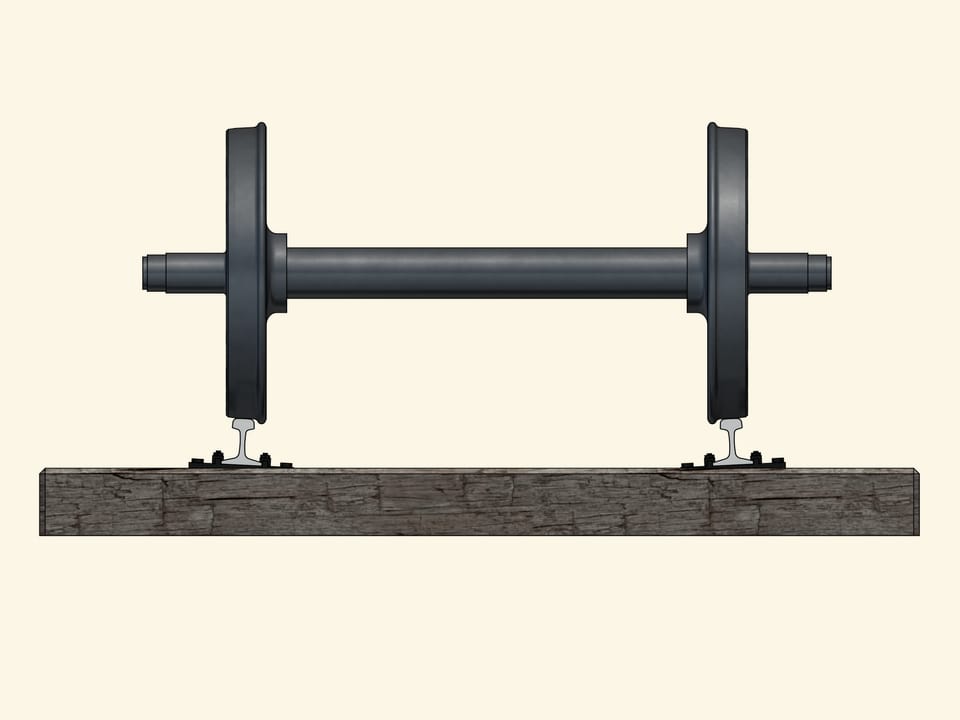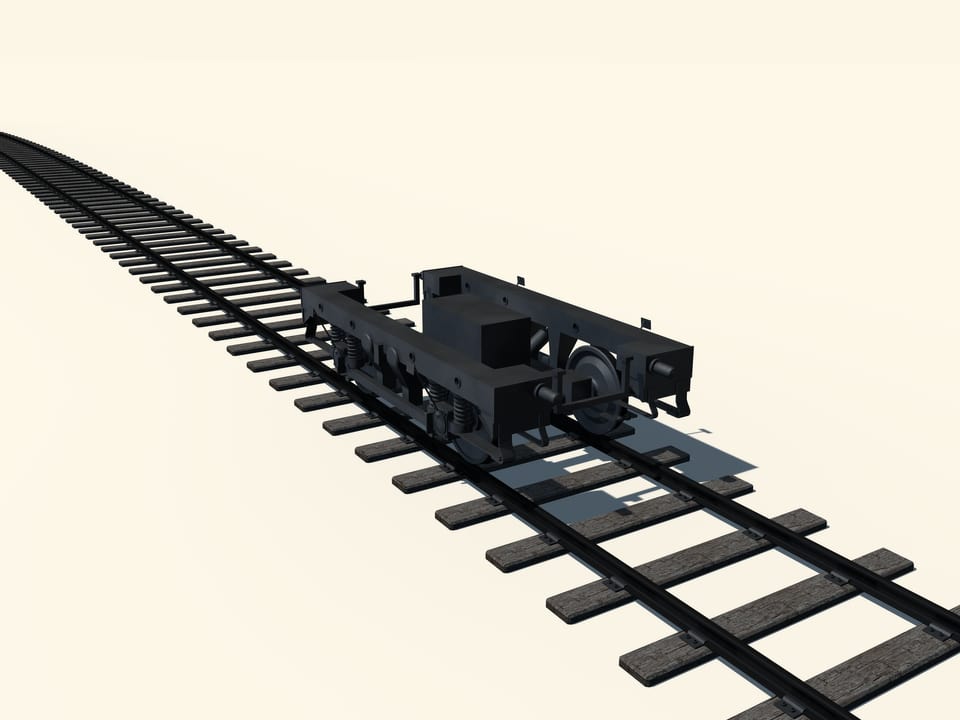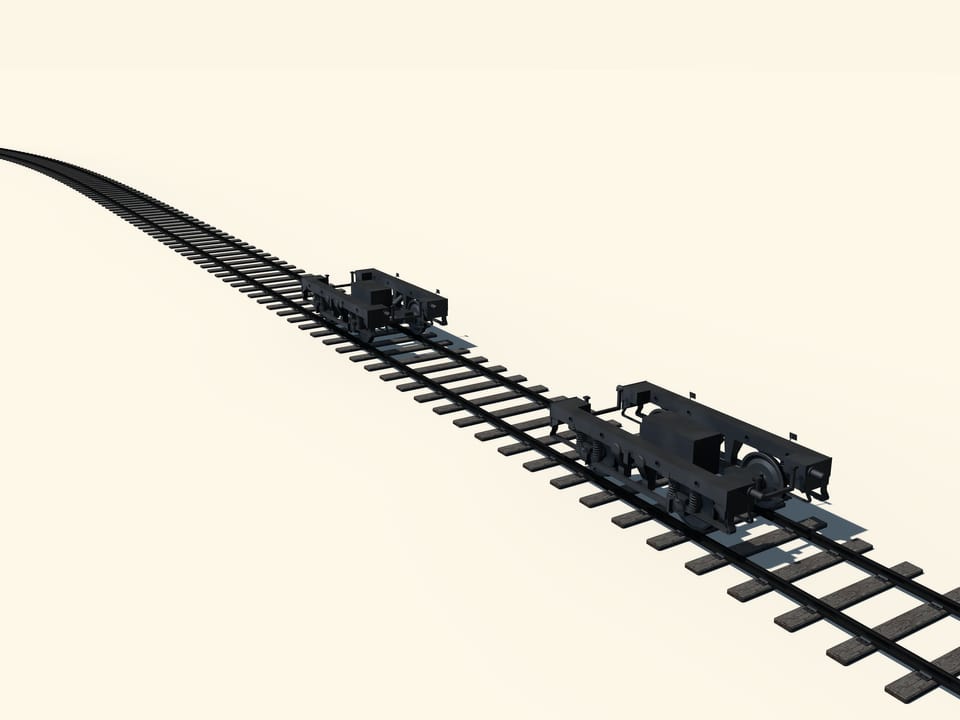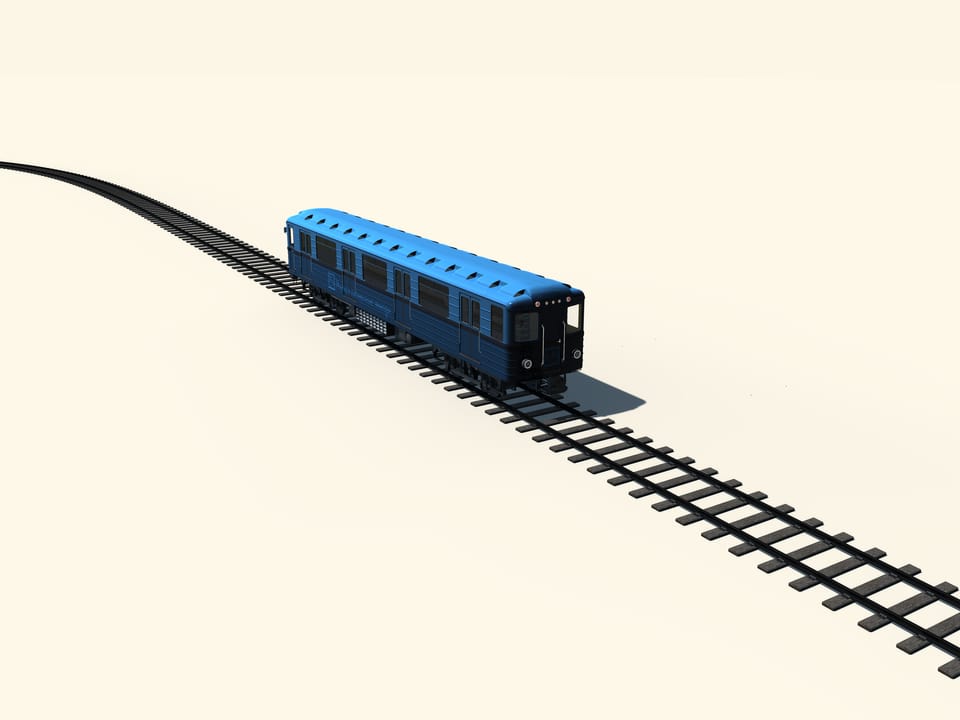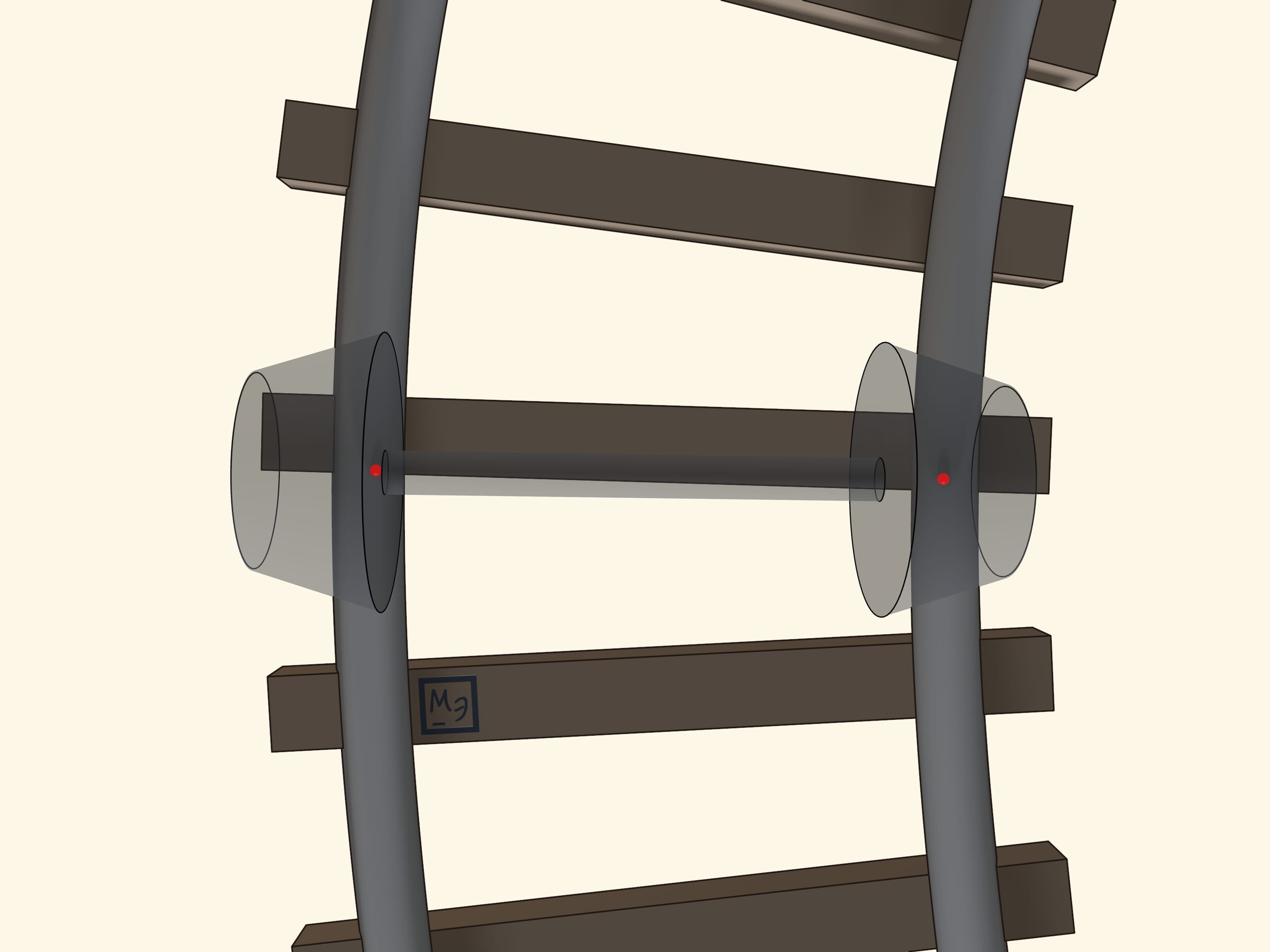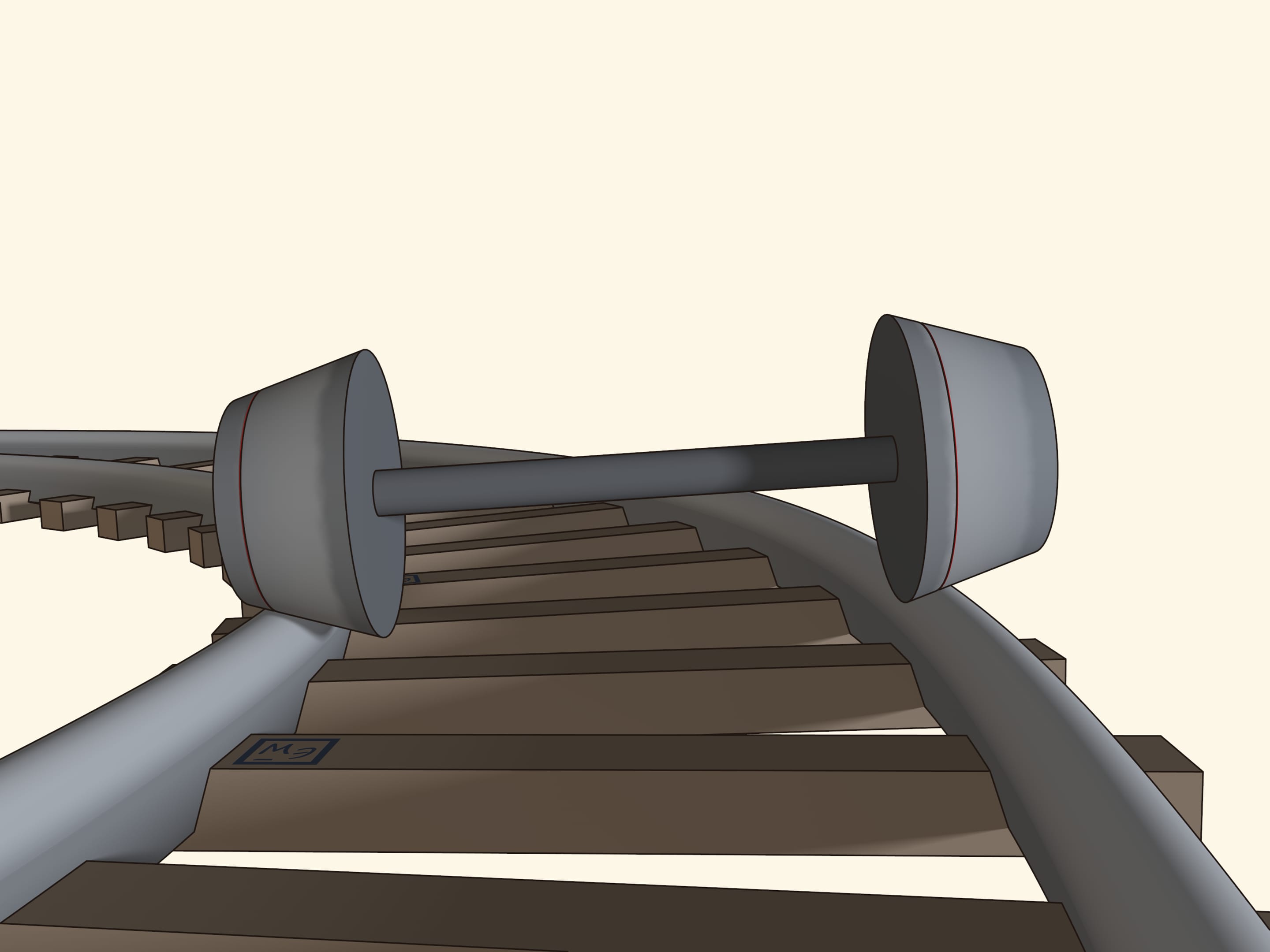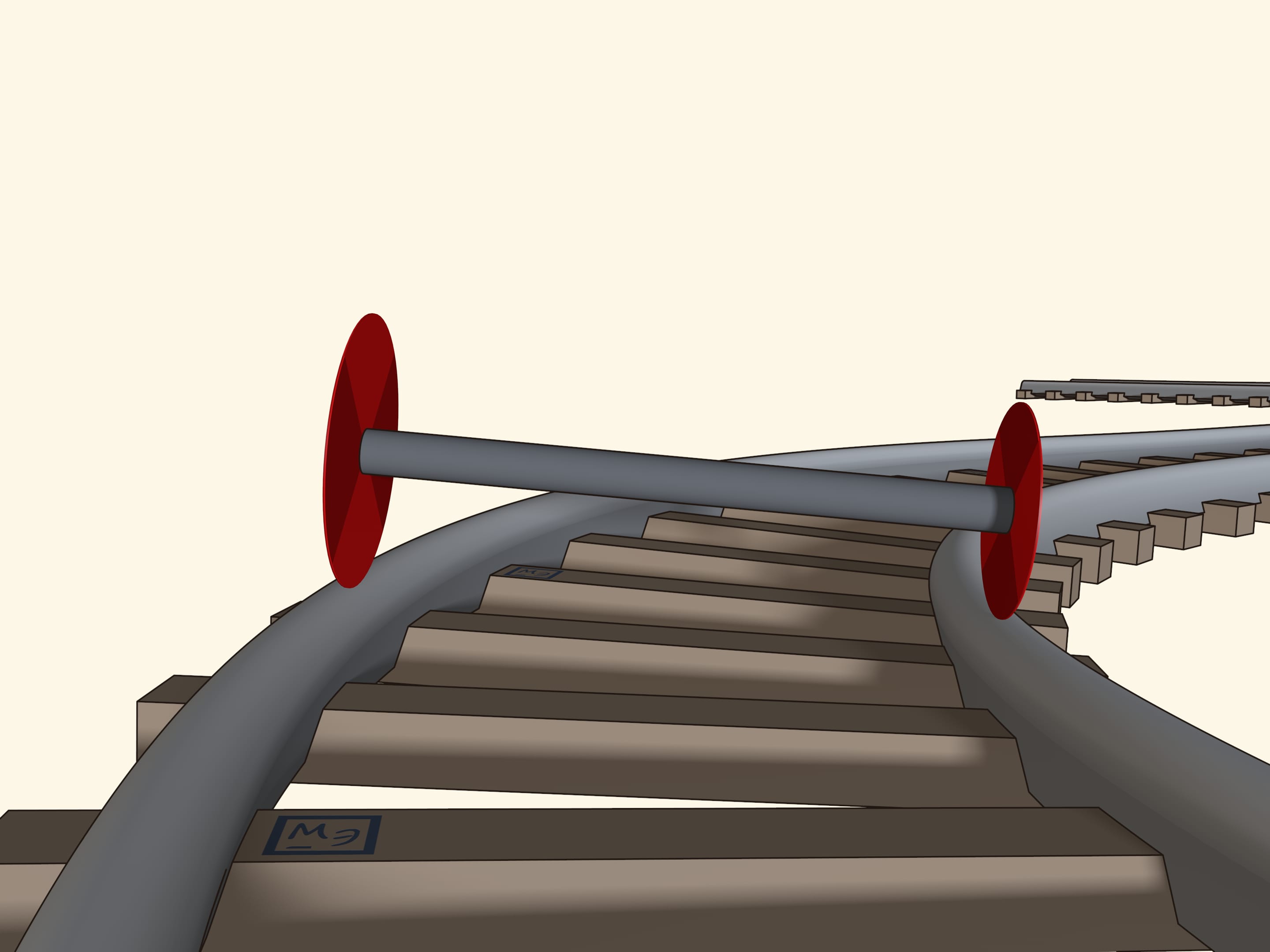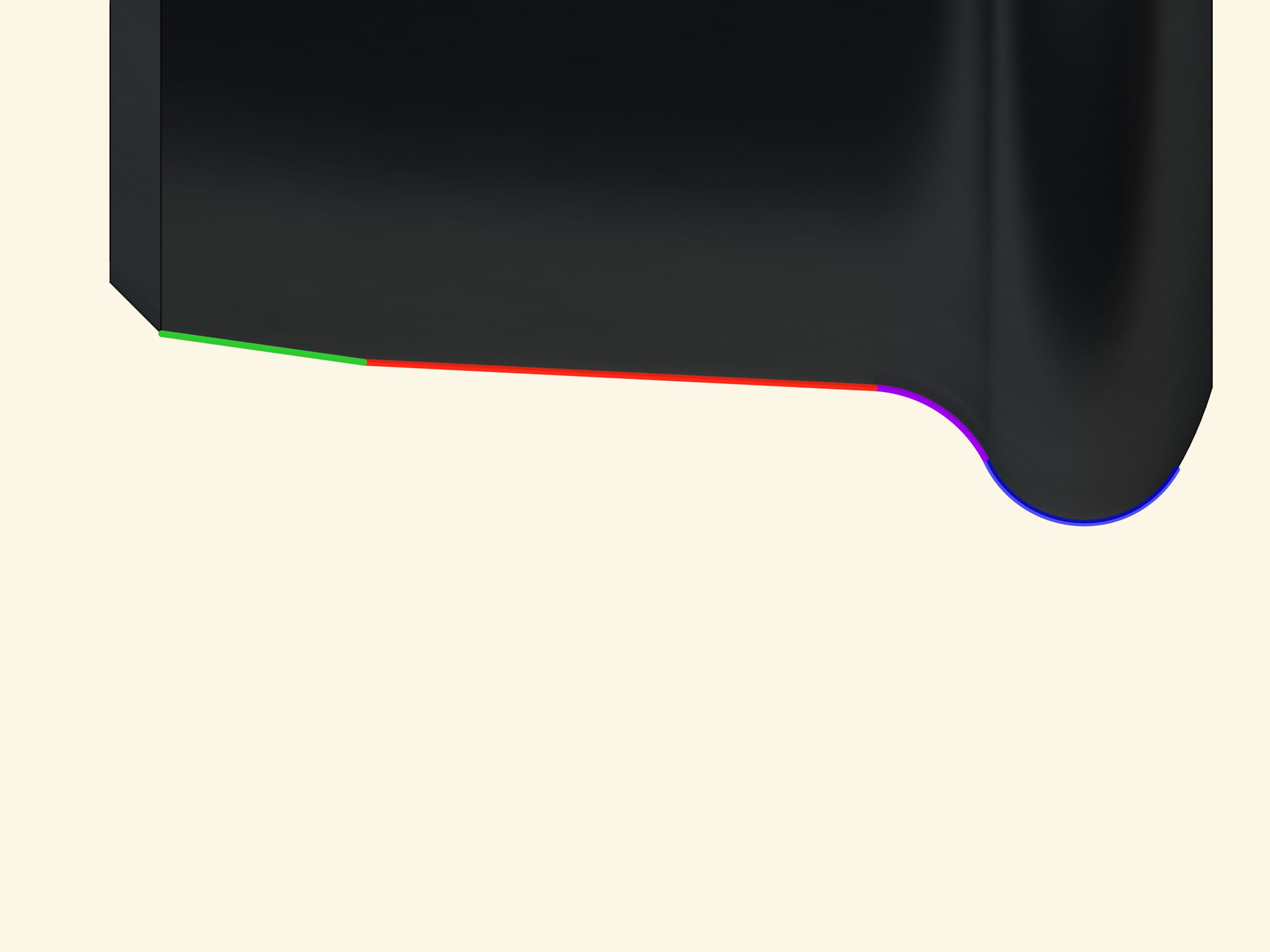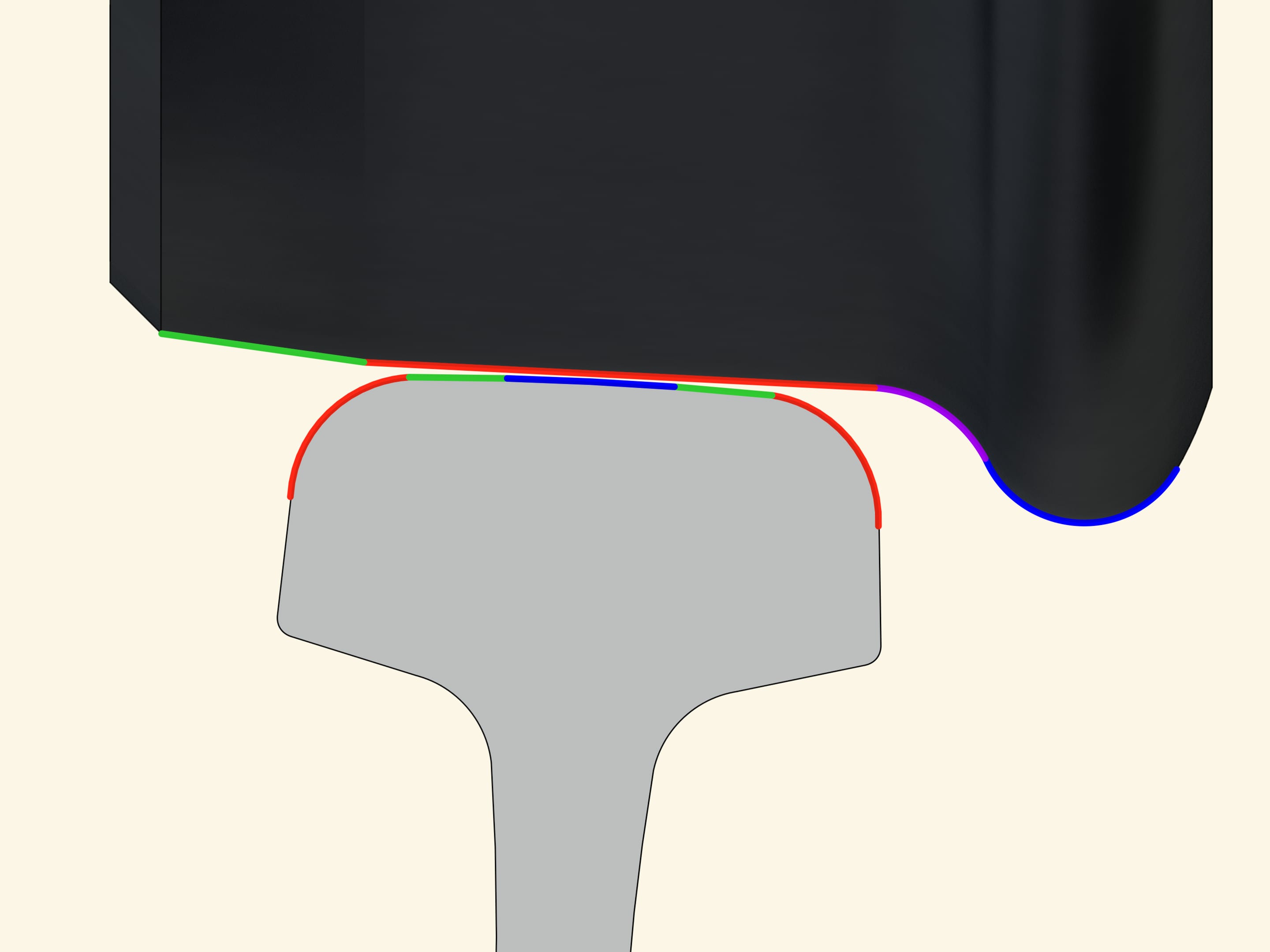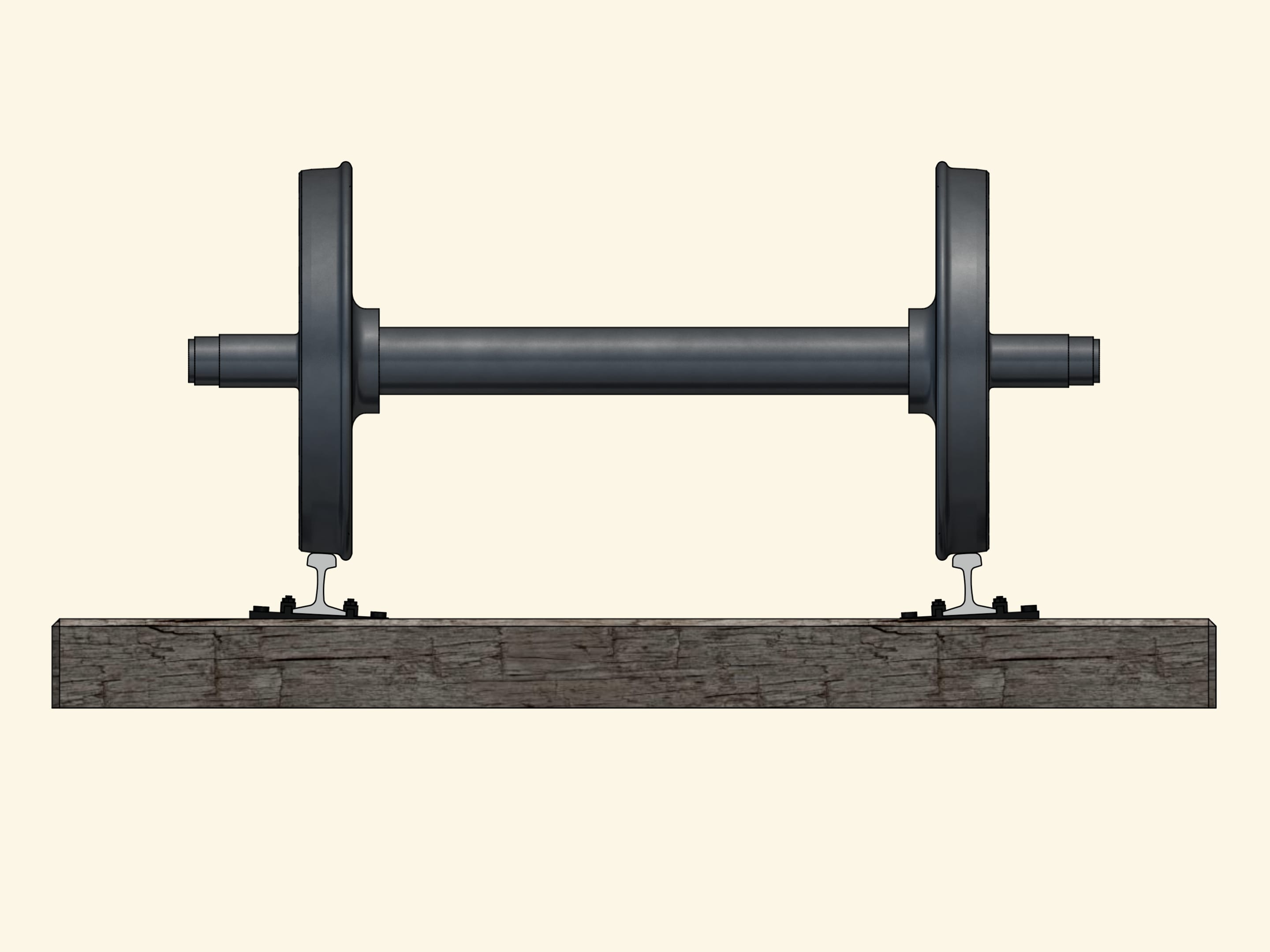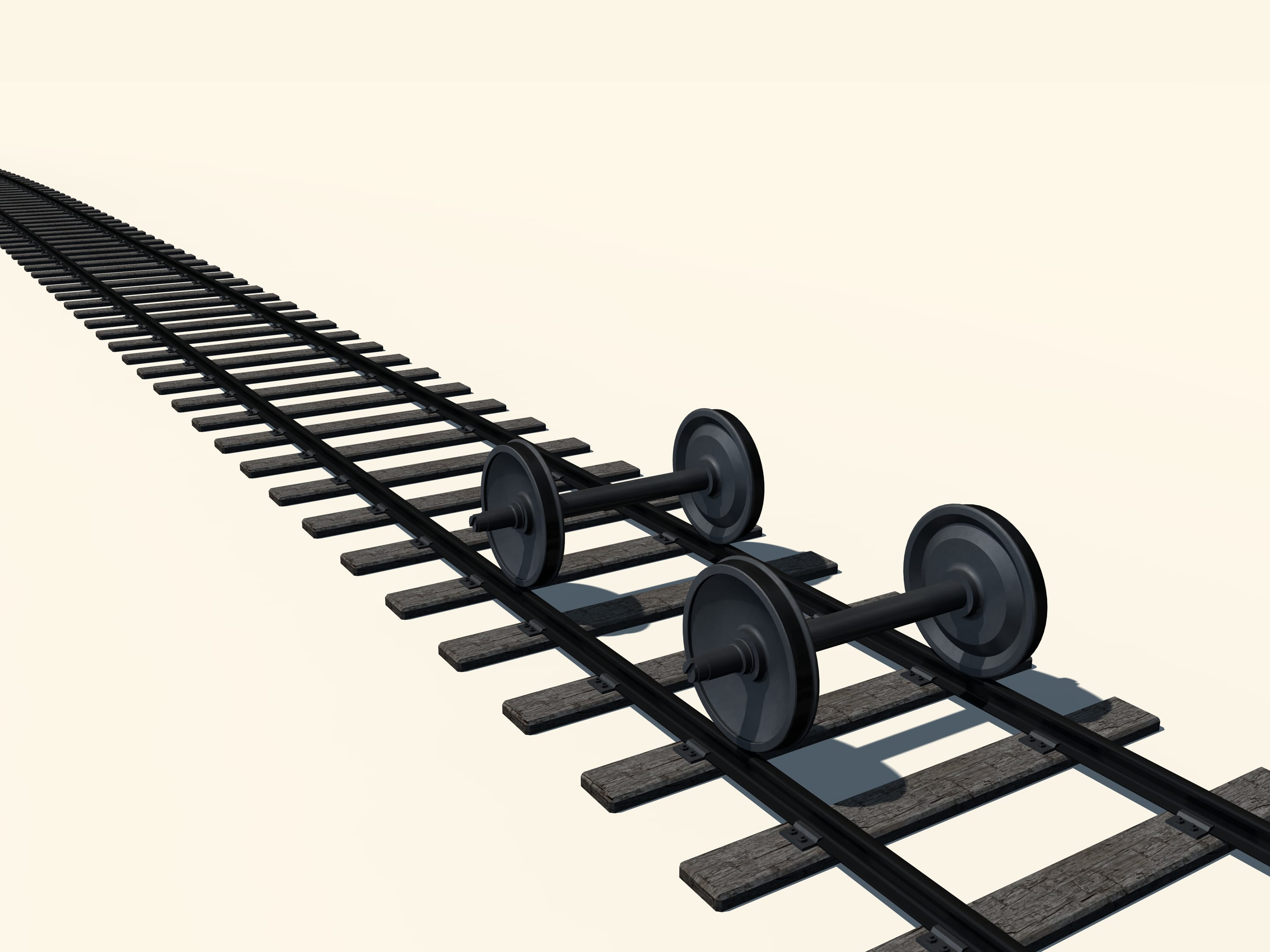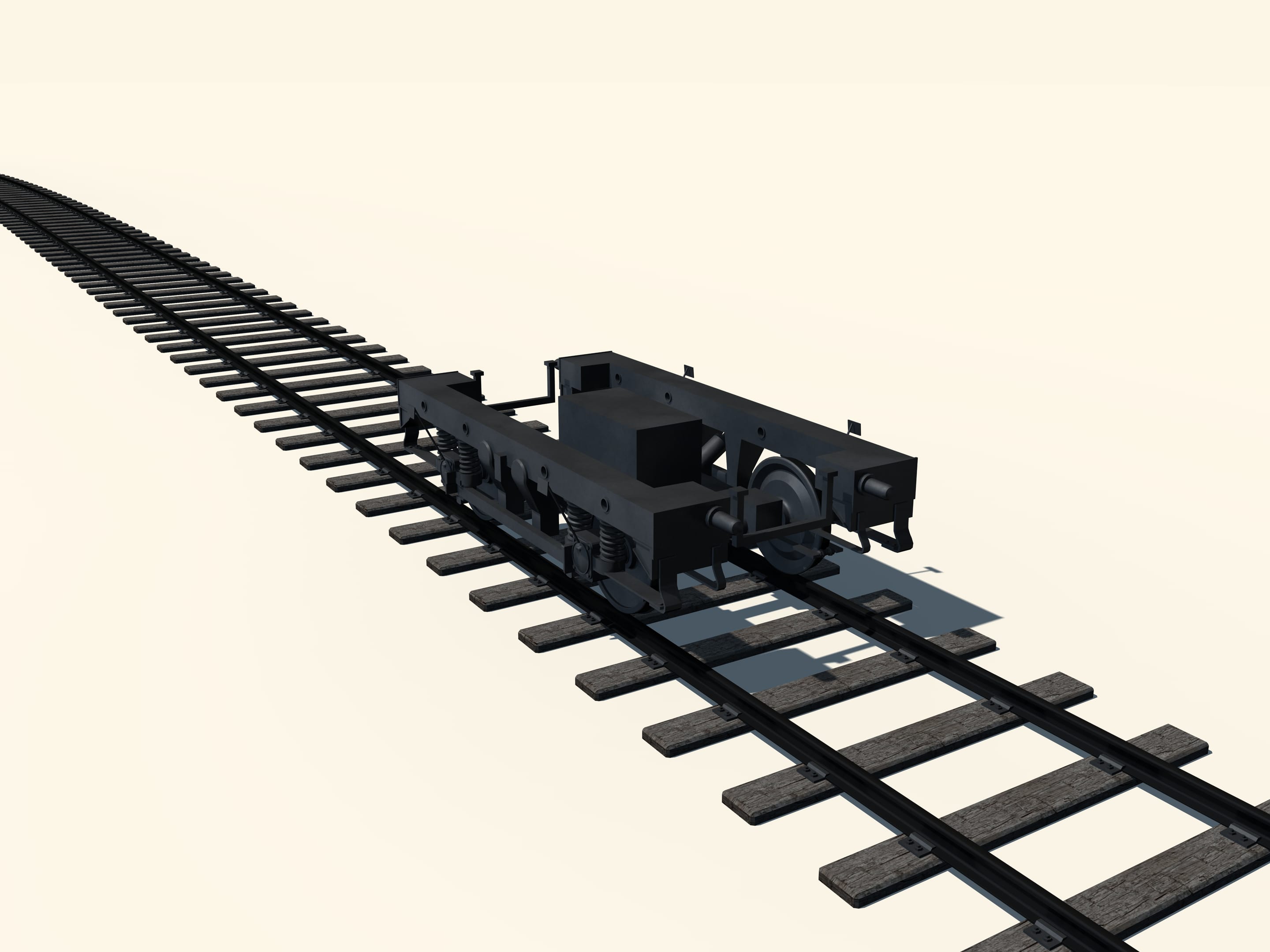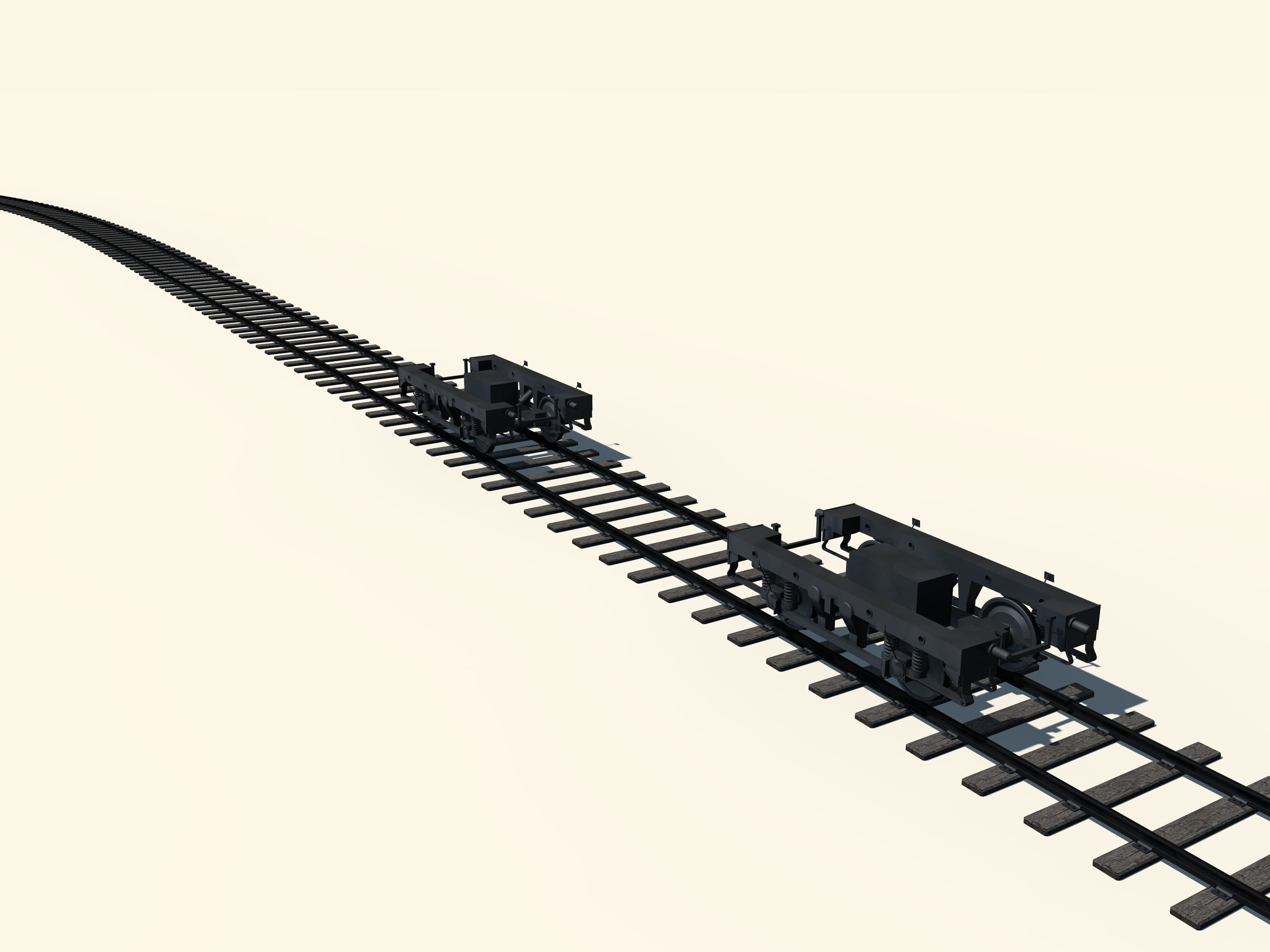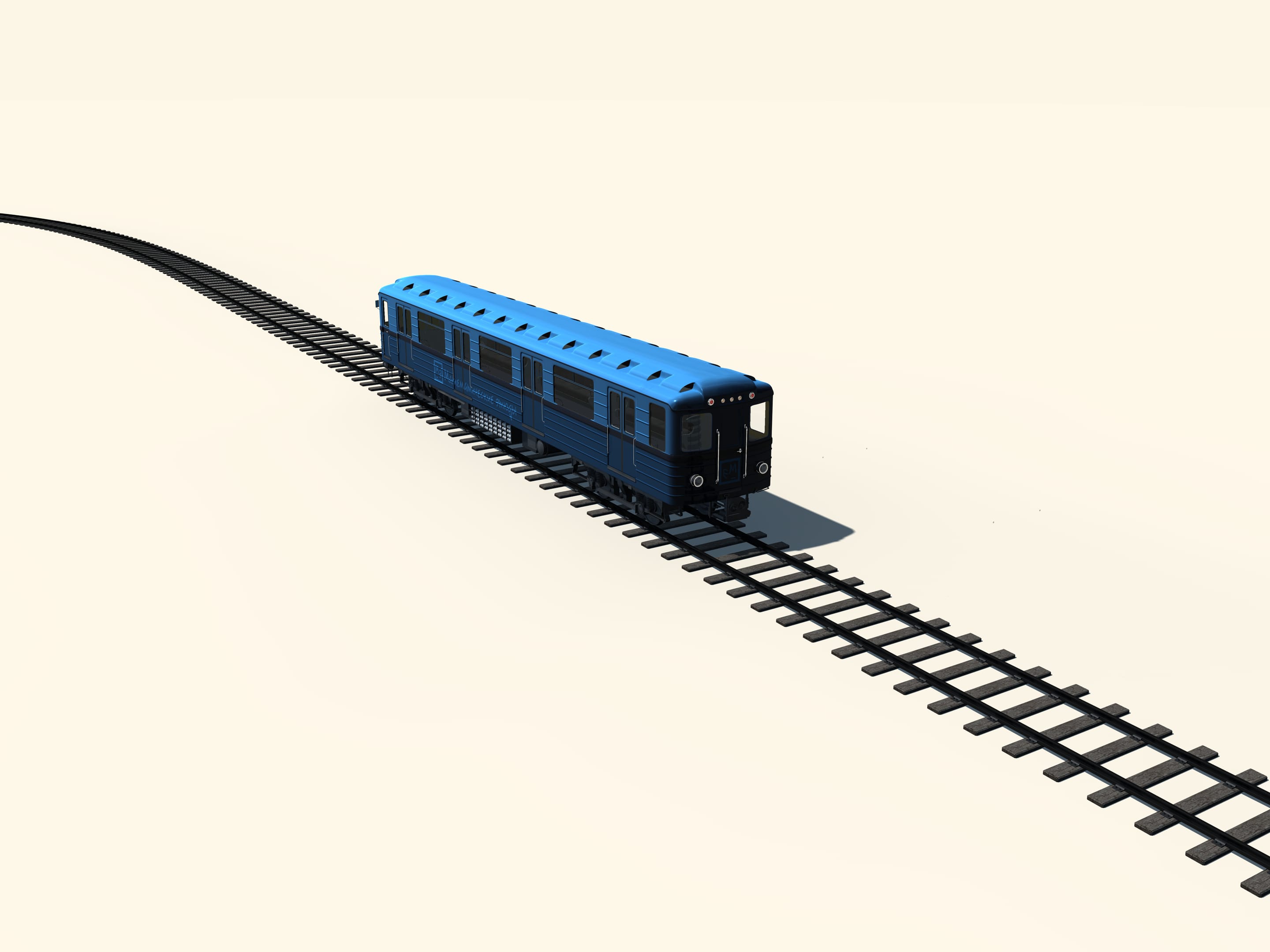Many boys wanted to go into the train driver cab. In fact, going in a straight tunnel, which is simply a cylinder, it is not so exciting. But something different are the bends.
But in which manner the train wagons corner on the rails? In fact, the right and left wheels are rigidly attached together. Moreover, in a curve the radius of curvature of the outer rail is greater than the radius of the inner one, so the length of the arc of a circle which is covered by the outside wheel is greater than the length of the arc covered by the wheel inside. And it is necessary that none of the two wheels skid on the rail.
Consider a simplified model which nevertheless explains well what essentially happens. The wheels in this model are two identical truncated cones and are rigidly fixed to the axis. The profile of the rail surface is an arc of a circle. If the rails were embedded vertically, they would suffer an extra boost, since the load of the wheel affects on the rail perpendicularly to its surface. Therefore, the rails are embedded a little inclined inwards, so that the axis of their profile is perpendicular to the surface of the conical wheels.
Let us follow a pair of wheels while passing on a bend. It happens that they shift with respect to the track!
Observe how a curve is made. After a straight stretch begins a curved one with a variable radius of curvature, then there is a piece with constant radius, i.e., an arc of a circle. To ensure that passengers do not suffer jolts from the sides of the wagon while passing between two different stretches, a strong condition must be satisfied: the second derivative of the trajectory must be continuous at the points of transition between two consecutive stretches.
The tangency between the conic wheels and the rail surface is made by points. Moving on a bend, the point of tangency moves on the cone. Let us draw the circles made by all points of tangency. When the axis is located exactly in the middle, i.e., when the wagon is moving in a straight stretch of track, these circles on the two wheels attached to the same axis are equal. But when the axis is shifted, in a curved stretch, the circle on the inner wheel is smaller than the circle on the outer wheel. So we can consider that the wheels have variable radii. And since the radius of the inner wheel is smaller than the radius of the outer wheel, when the wheels are moving on the rails without skidding, the inner wheel makes a shorter ride than the outer wheel.
But why in a bend the pair of wheels is shifted over the rails? It turns out that physics is not involved. It’s just geometry, and also a very beautiful geometry! When the tracks bend, they cause a shift of the pair of wheels exactly as much as necessary so that the inner and the outer wheels roll without skidding.
A good model must take into account the most important properties of the objects under consideration and to neglect the details. Such is the model we have considered, but in reality everything is more complex. According to the railway company, the surface of the wheel is composed of two truncated cones with slightly different openings angles. There is moreover a ledge, i.e., the wheel has an edge that prevents it from leaving the rails. The profile of the projection is made of different arcs of circles. The profile of the rail, which in the model consisted of a circular arc, is in fact formed by the union of five different arcs of circles.
How to deal with a bend by a pair of wheels of the train is substantially different from how to deal by the wheels of a car, but in reality, in either case plays a role that wonderful science which is the geometry.
Additional info
- A pair of train wheels holds about a ton. As for driving wheels, then a more engine is fixed to the axis, which makes reaching the load of a ton and a half. The wheel diameter is about one meter.
- In Russia, for strategic reasons the distances between the rails of the train and of the subway lines are the same. The track gauge, i.e., the distance between the inner edges of the rails is 1520 millimeters.
- A bend is considered to be sharp if its curvature radius is less than 350 meters.. In such curves the gauge can exceed a bit the standard width, but at most by 3 cm.
- The total length of railways in Russia is about 87 thousand kilometres. The length of subway lines in Moscow (in 2011) is about 300 km
- Some points of each wheel moves in the opposite direction with respect to the train. Can you tell which?






